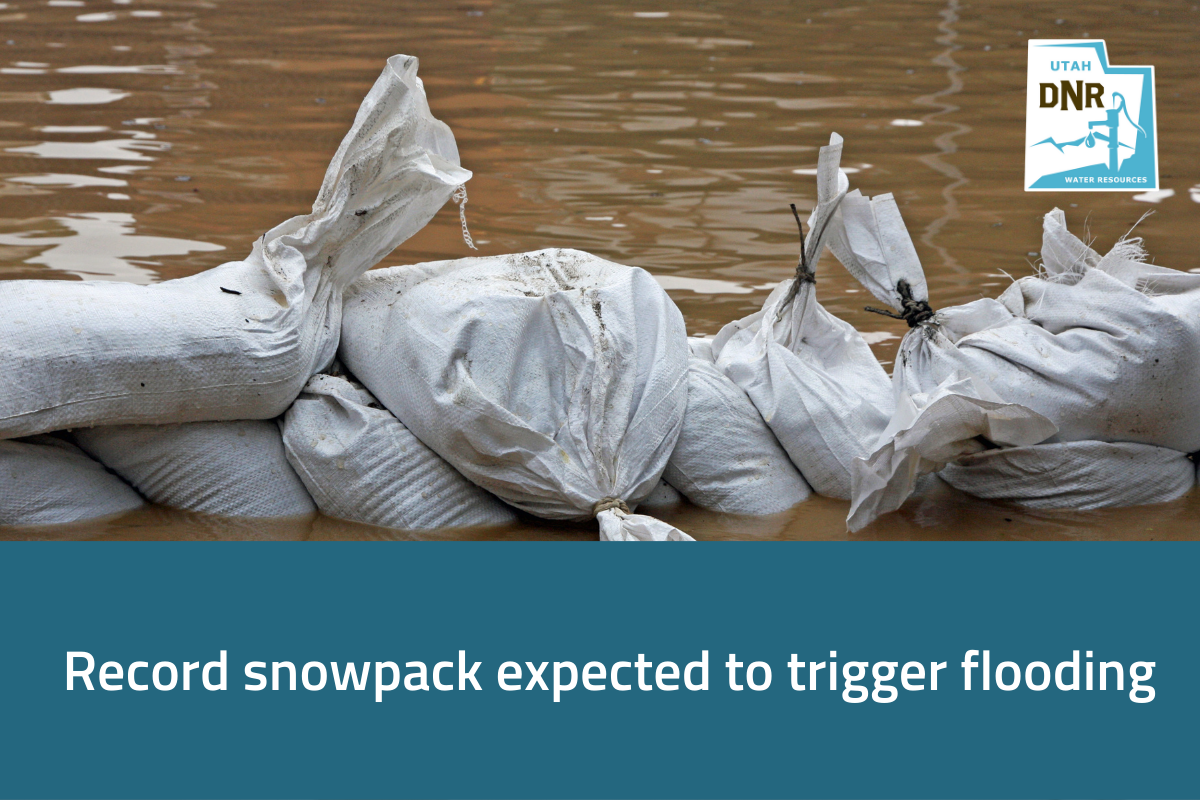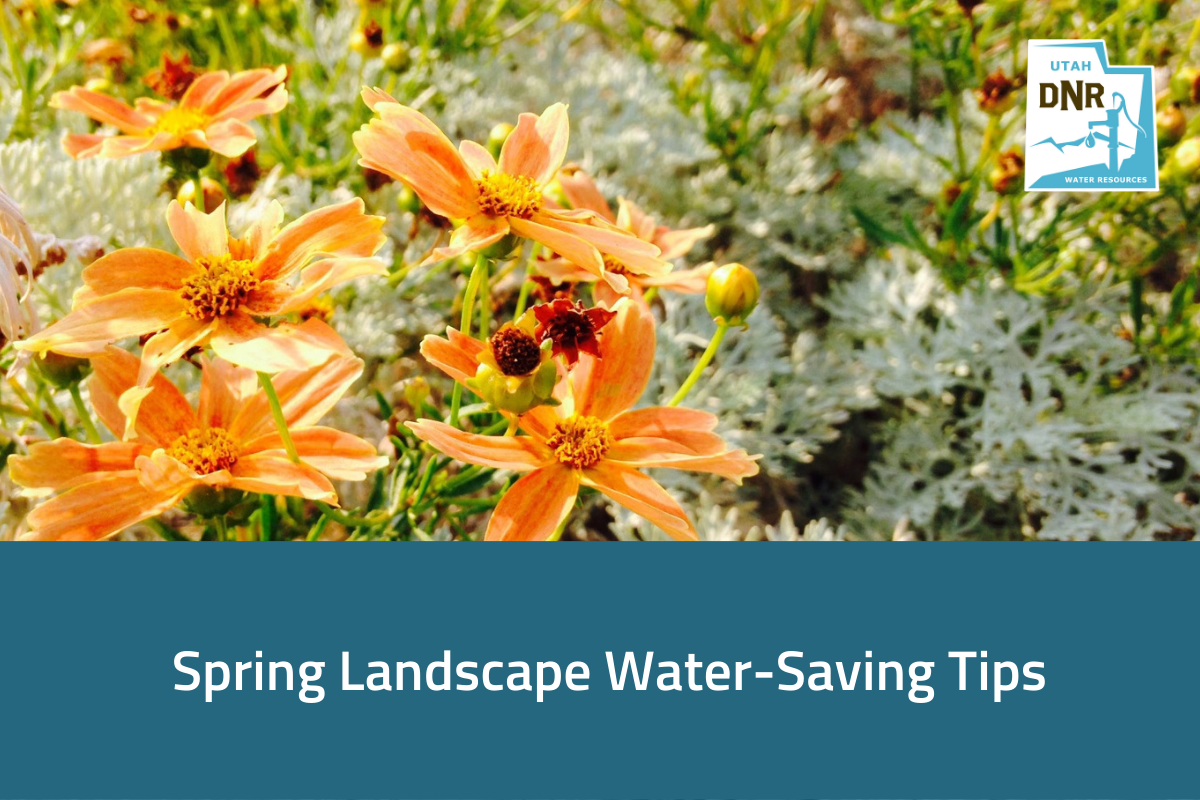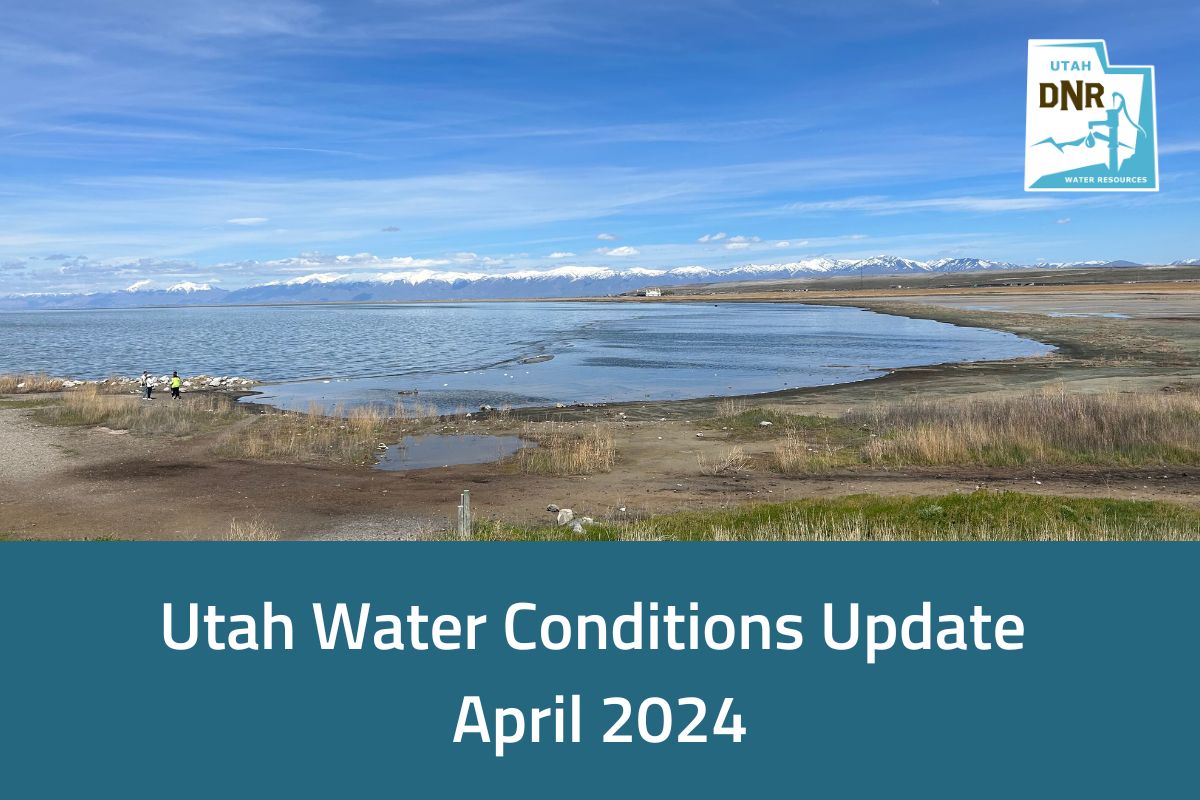SALT LAKE CITY (April 14, 2023) —Record snowpack across the state has increased the potential for flooding, landslides and debris flows in some areas. Snowpack peaked at 30 inches of snow water equivalent this year versus 12 inches last year (15.8 inches is the statewide average peak). Runoff has begun. A gradual warmup and cooler nighttime temperatures are best for optimal runoff and also flood management.
However, we are in uncharted territory and have never seen this much snow since snowpack measuring began. The good news is that with the exception of the very largest lakes and reservoirs like Bear Lake, Flaming Gorge, Strawberry, Great Salt Lake and Lake Powell, our reservoirs are expected to fill!
The bad news is that with all this amazing snow comes increased flooding. Snowpack in some basins is expected to melt and generate enough water to refill some of our reservoirs several times over. Water managers around the state are monitoring conditions carefully and releasing water to make room for runoff.
Differences Between 2023 and 1983
- In 1983, runoff didn’t start until May 20 (statewide average). Temperatures spiked, and flooding resulted.
- Temperatures in the spring of 1983 were generally below average until late May. There were only three days above 70 degrees before May 20.
- 1982 had also been a record-wet year, saturating the ground and also filling reservoirs.
- Significant infrastructure investment has occurred throughout the state to help manage flood waters, including the construction of new reservoirs, dam safety upgrades, and improving culverts and piped systems to allow better conveyance of spring runoff and storm events.
Things to Know
- Rivers and streams are running fast, high and cold. Stay away from river and stream banks until runoff subsides.
- Conditions may impact Utah State Parks and other recreation areas, including campgrounds and trails.
- The Utah Geological Survey is monitoring areas with saturated soils that can cause unstable conditions, rockslides, slumps, and erosion that may create hazards.
- Water Right’s Dam Safety section has been taking steps to ensure the integrity of dams and allow for the safe filling of reservoirs. This includes monitoring inflow to reservoirs and working with dam owners to release appropriate amounts of water to ensure the safety of individuals and properties downstream from the dam, the stream bed’s well-being, and the dam’s safe operation.
- Through funding and support for various projects, the Water Resources has helped to reduce the risk of flooding and protect communities from the devastating effects of these natural disasters (projects include many dam safety upgrades, Thistle slide work, Green River diversion structure replacement and more).
- Water Right’s Stream Alteration section has been reminding those who maintain water courses to keep them free from debris to allow for efficient water flow. Any debris removal that requires heavy equipment within a stream bed requires a stream alteration permit.
- The Department of Natural Resources is coordinating with other state, federal, county and local agencies to proactively plan for potential flooding and prepare to respond if flooding occurs.
Helpful Resources
- Colorado Basin River Forecasting Center – Statewide flood forecasting
- Division of Emergency Management – Statewide emergency preparedness and emergency response information
- Flood hazard information – Flood information for community members
- Current Conditions – Current weather conditions from the National Weather Service
- 1-6 day flood forecast – Advanced hydrologic predictions from the National Weather Service
- Floodplain map and risk assessment tool maps that indicate which areas could be most impacted by flooding (maps are managed by local agencies and best know conditions in their areas)
- Bureau of Reclamation’s Snow to Flow Forecaster
###
ABOUT THE DEPARTMENT OF NATURAL RESOURCES
The Utah Department of Natural Resources is one of the state’s largest agencies and helps ensure the quality of life of Utah residents by managing and protecting the state’s natural resources. The department includes eight divisions: State Parks; Outdoor Recreation; Oil, Gas and Mining; Forestry, Fire and State Lands; Water Resources; Water Rights; Wildlife Resources and the Utah Geological Survey. The Public Lands Policy Coordinating Office and the Office of Energy Development were also aligned with DNR in 2021 to provide closer coordination.
MEDIA CONTACTS
Kim Wells
Communications Director, Utah Department of Natural Resources
kimwells@utah.gov
801.803.0336




